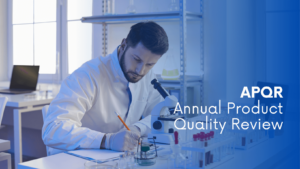Subject
The client is a globally renowned company operating in North America, Europe, and Asia, specializing in thermal mapping devices. Their products include validated software and calibrated probes for measuring thermal, humidity, and pressure levels.
Our client faced delays in the arrival of their international engineers due to visa formalities. As they couldn’t afford further delays, they sought assistance to fill the manpower gap. With most of their specialists engaged in other projects, they reached out to us due to our expertise in a similar industry.
Our primary task was to assist the client in meeting deadlines for qualifying approximately 40 devices. The objective was SIP* Cycle Development (CD). The plan was to provide documented evidence that the SIP process could fulfill the defined acceptance criteria, all CPPs defined by the client were appropriately controlled/monitored, the SIP process was suitable, and the system/equipment was free of viable microorganisms with a predefined probability.
Scope of work
We were involved in a thermal mapping for SIP Cycle Development for Downstream (DSP) and Upstream (USP) skids and lines such as:
- Harvest tanks (the biggest was 14000 L)
- Product Lines
- Virus Filtration
- Chroma
- Buffer Vessels
Initially, there were preliminary training sessions. Due to our extensive knowledge of equipment qualification, training our team took only 2 days instead of weeks. Each day, we received a list of devices to work on. During the morning meeting, an action plan was established, and we were provided with a protocol issued by the client’s QA department. Upon receiving this protocol, we prepared the equipment, such as screwdrivers, etc., and proceeded to the clean zone, where, in coordination with the Automation team, we accessed the devices.

Following a company procedure, before commencing work on a device, a specialist from the technical department had to secure it by isolating certain power or pneumatic elements, closing valves, locking them, and confirming that the device was safe to operate. Only then could we dismantle the machines according to the plan outlined in the protocol.
After installation, a leak test was conducted. Subsequently, an engineer would unlock the machine for proper operation, allowing its use. Depending on the client’s preference, whether prepared for the next day or the same day, a run test of the sterilization process was conducted. Meanwhile, we monitored whether all sensors indicated correct parameters or if there were any discrepancies.
There were occasions when the results deviated from expectations, often due to issues like a valve failing to open or other unforeseen circumstances. In such cases, the test was paused, and a thorough investigation into the cause of the error ensued. Recommendations for corrective actions were proposed, subject to the client’s approval. After implementing the necessary adjustments, we proceeded to the next test.
Upon successful completion of the test, as per protocol, a 40-minute wait was observed for parameters to stabilize. If all parameters were stable, temperature and pressure readings were taken from the devices. These readings were also validated using loggers placed within the installation, necessitating the repetition of the securing procedure with the technical department.
Loggers were retrieved, data was extracted, and an evaluation was performed to ensure compliance with predefined standards. After each measurement, the thermocouples were post-calibrated at one point (121 °C) to verify whether they were damaged during the sterilization process and the reading was correct. An internal pre-calibration and adjustment was also performed before each subsequent thermocouple installation to confirm that the sensor readings were correct before subsequent measurements. We compared the data to calculate the F0 value, representing the sterilization time required to eliminate microorganisms, verifying whether it met the client’s requirements. Upon positive test results and acceptance of all calculations, a decision was made to remove our sensors.
The equipment was disarmed, set to a ready state for operation, and checked by the client’s automation team to ensure proper functioning and sealing of all components. Only then did we conclude work on a single device.
There were days as well when we worked on multiple devices simultaneously: installing equipment in one, conducting tests in another, and dismantling equipment in a third.
One of the primary challenges we encountered was the restricted access to devices, as critical measurement points were often physically challenging to reach. The client relied on their documentation to select critical measurement points, often located in physically challenging areas, requiring squeezing, climbing, or accessing tight spaces. Sometimes, several valves were mounted closely together, necessitating the removal of all to access the desired point. This posed a significant technical challenge.
Results
Our on-site project spanned 4 weeks. On our eCValidation team, we had 3 specialists: Professional Validation Specialist, Validation Specialist and Junior Validation Specialist.
In all devices/lines we installed probes in critical points determined and approved by the client to prove acceptance criteria for all systems were met (for example T ≥121.1°C at each position, Tmax : 135.0°C Lethality F0 ≥ 24 minutes at each position).

All sensors were pre-calibrated and post-calibrated for each single run.
Thanks to our support, the client on site achieved the following:
- Proved the validity of the developed process (temperatures, pressure, F0 value) in almost 20 installations/lines.
- Optimized probe installation locations at critical points.
- Experienced no downtimes for the installation in connection with our tests, and the process of receiving and returning the installation after the tests was smooth and without failures.
- Managed to remain compliant with CS’s deadline despite the lack of its own resources.
The client was highly satisfied as our support enabled them to focus solely on documentation without needing to supervise us. Our assistance allowed the client to catch up on any backlog they had by solely managing the documentation aspect. The level of communication was top-notch, fostering excellent rapport and ensuring clarity throughout the project.
Glossary:
*Sterilization-in-place (SIP) is an in-situ sterilization process where a system or system element is sterilized without being moved. SIP processes reduce or eliminate post-sterilization handling, thus providing aseptic connections between sterilized equipment.








